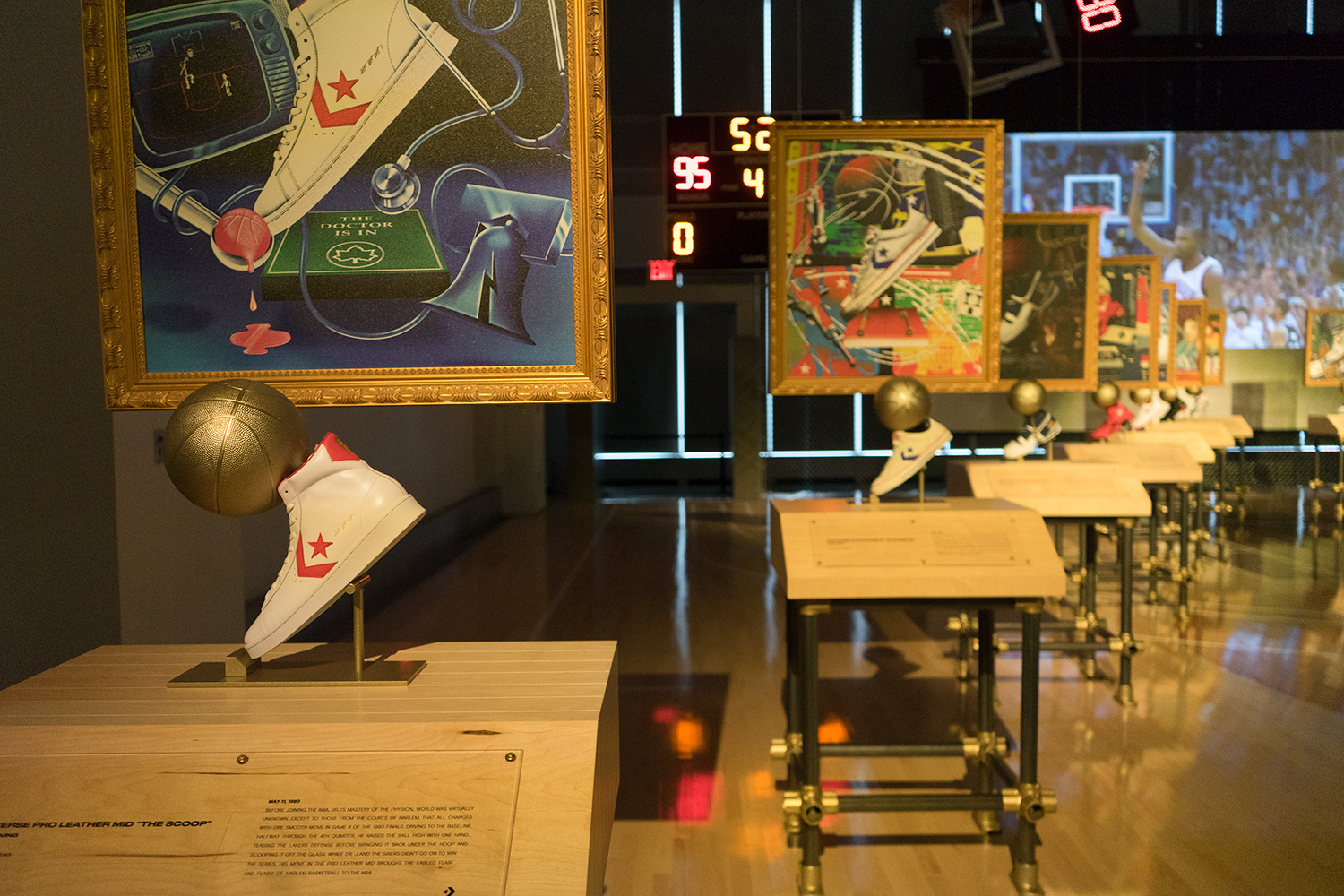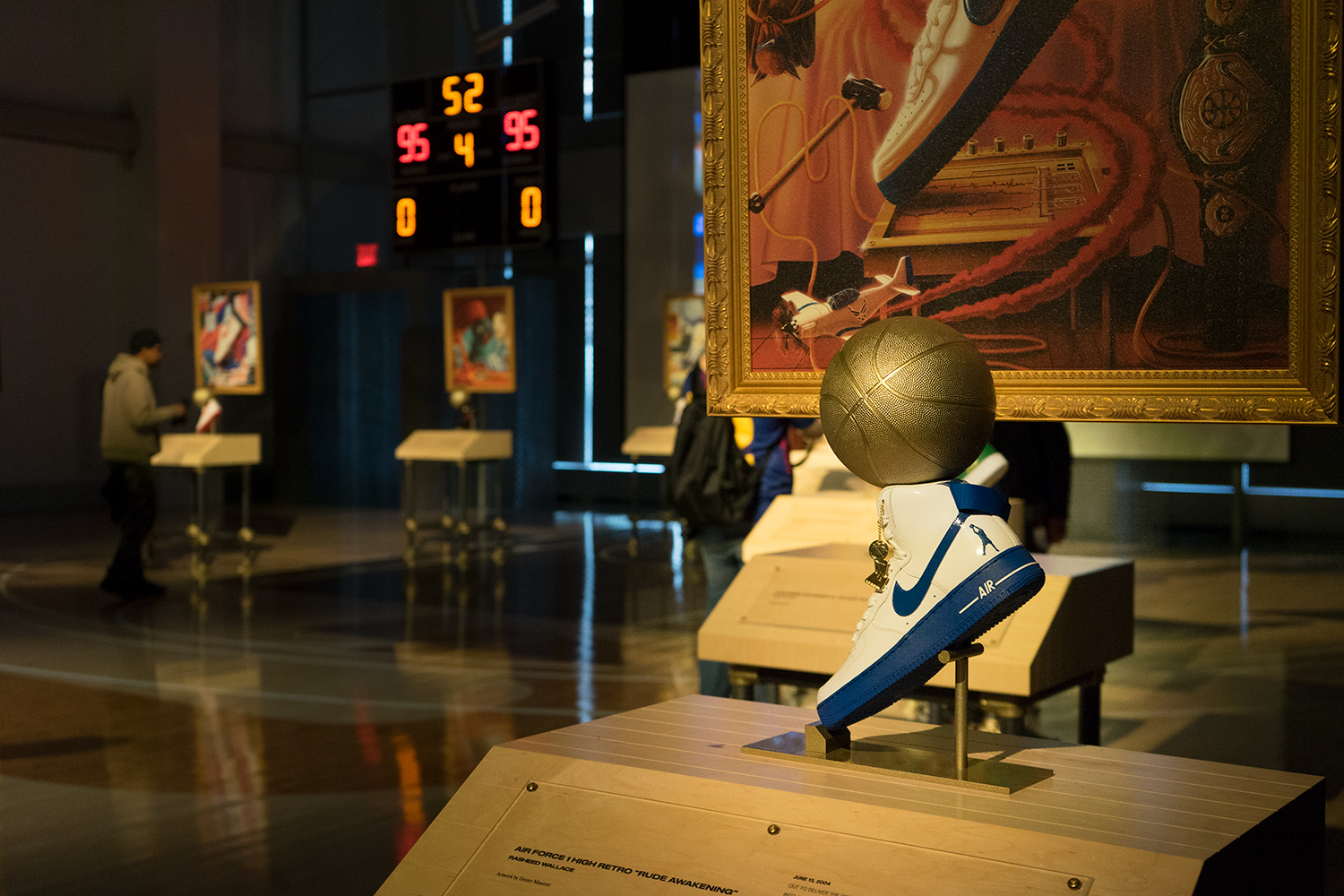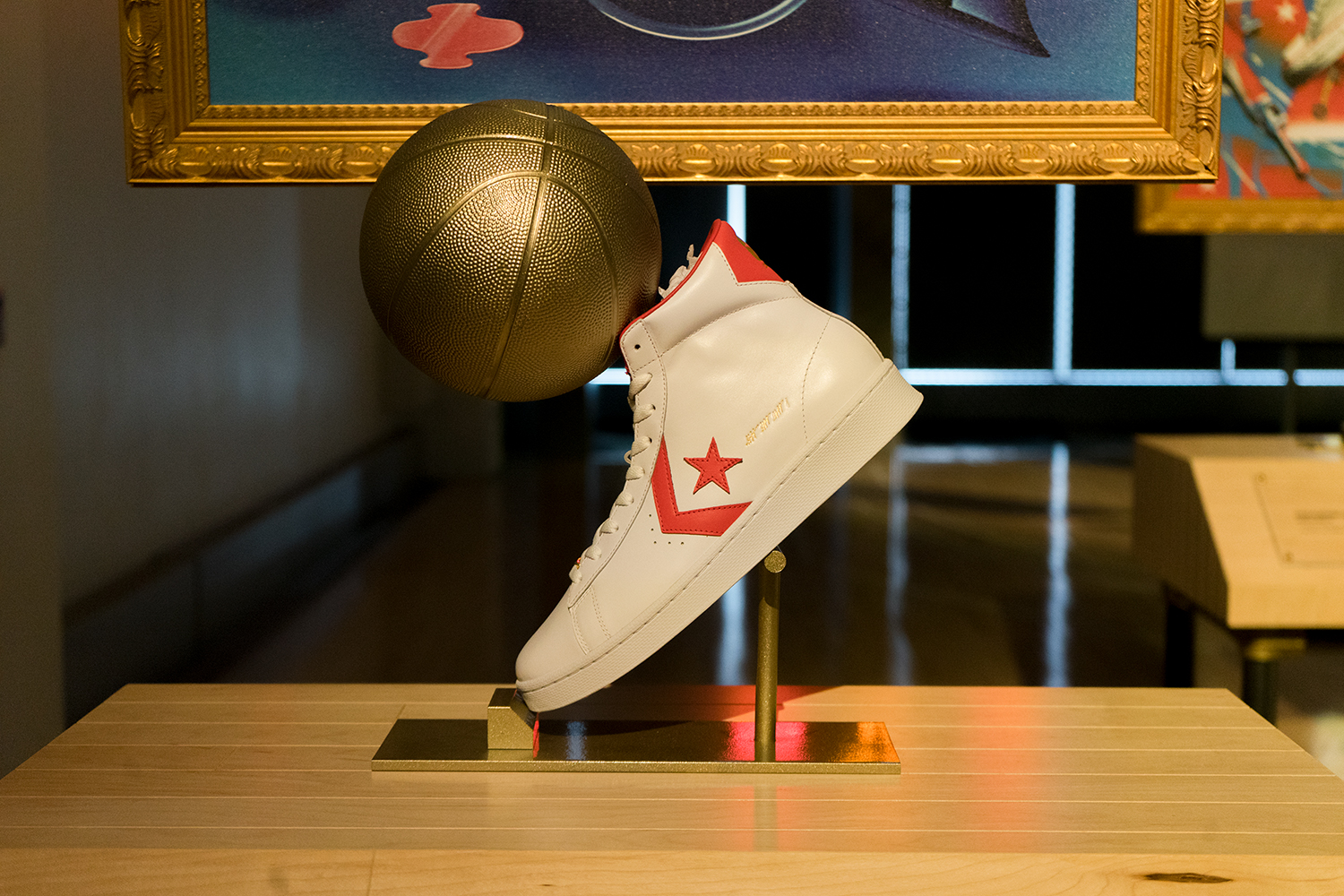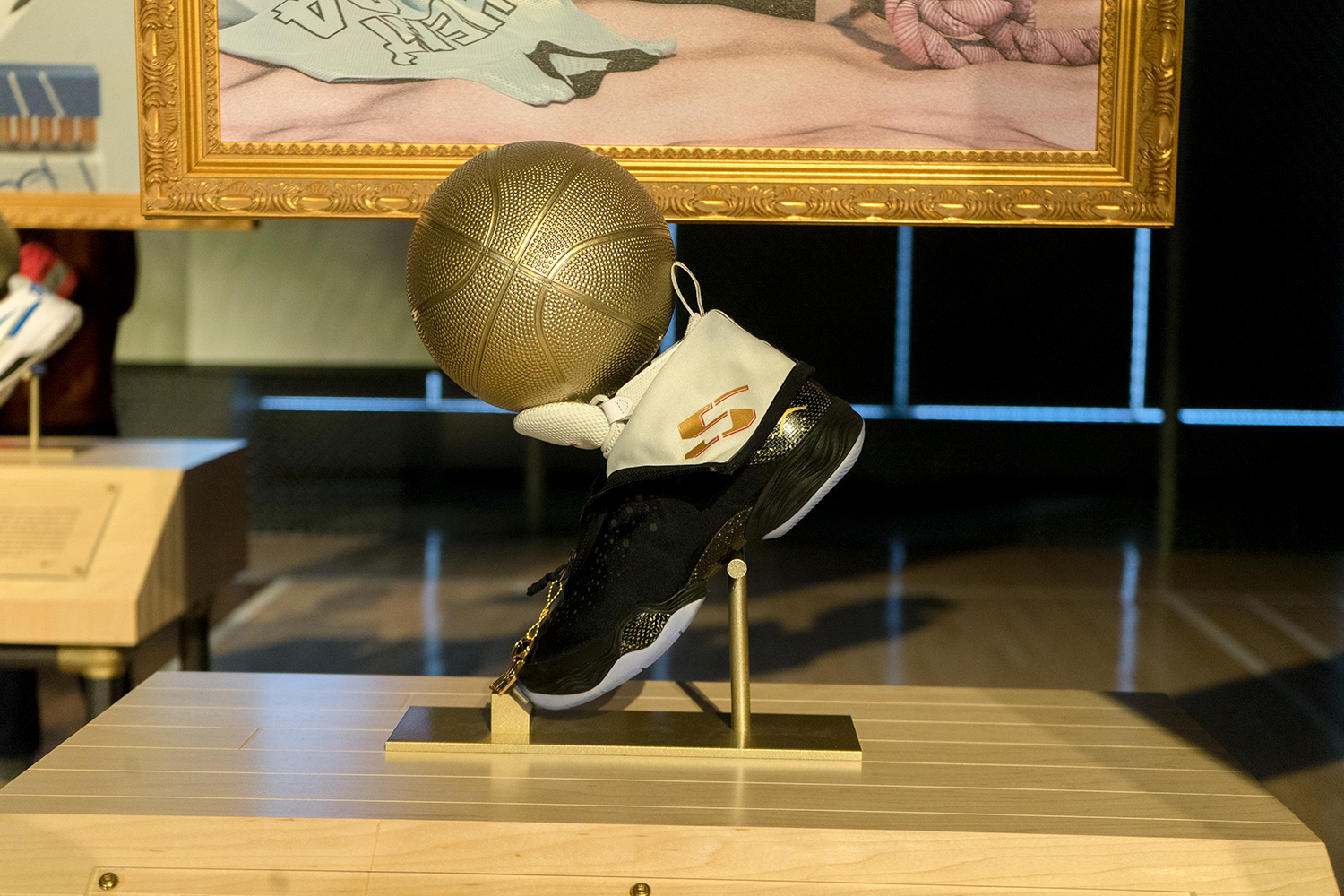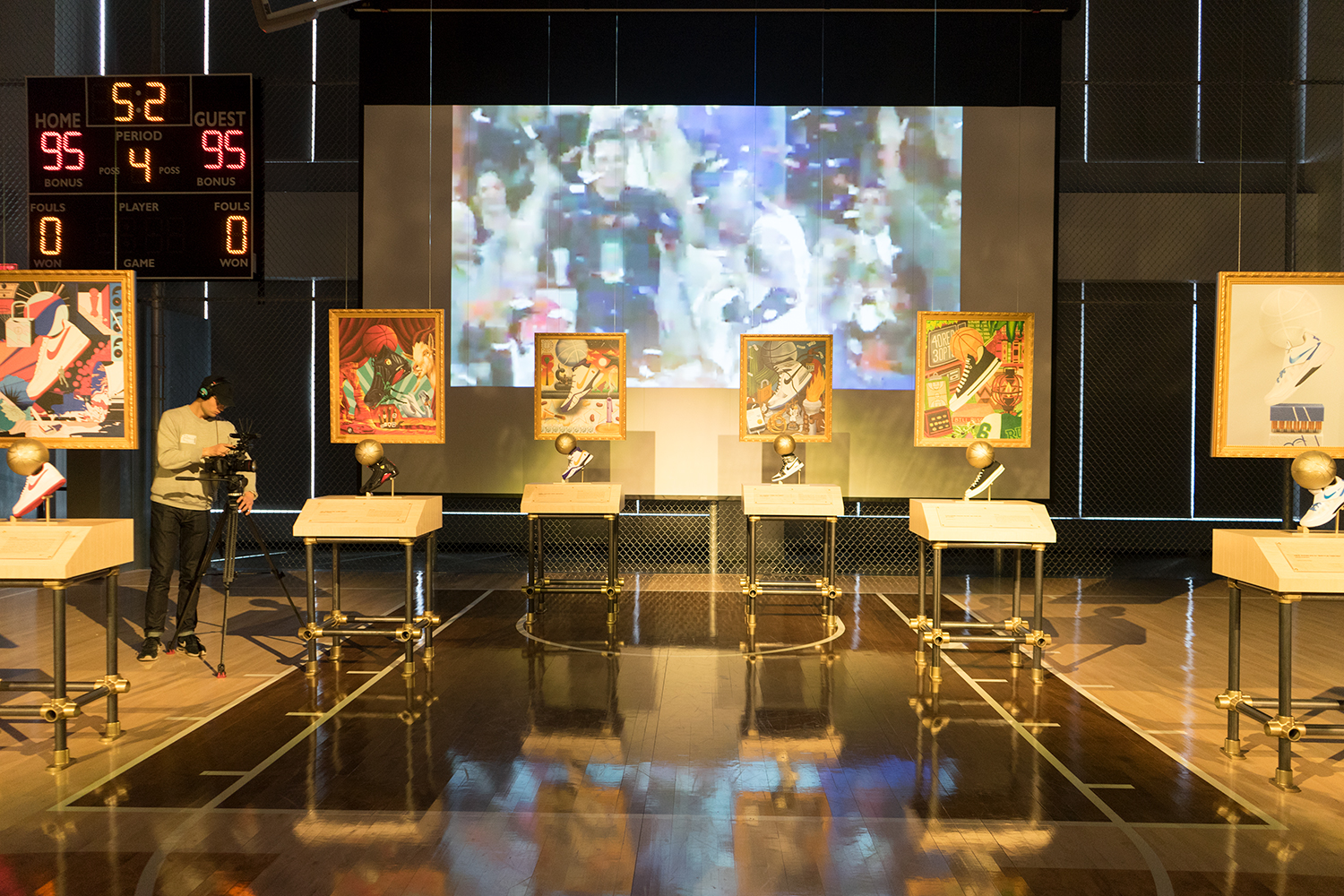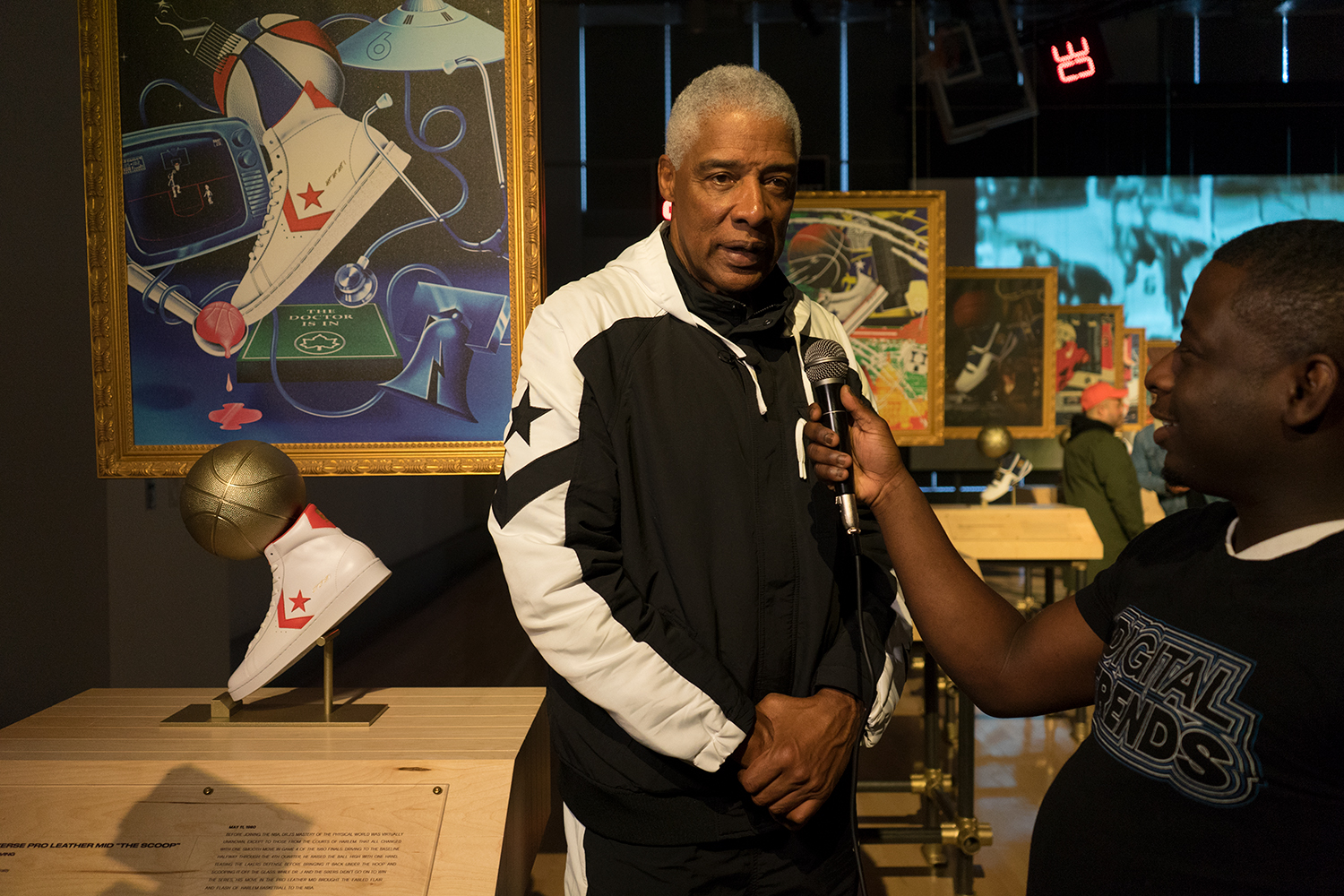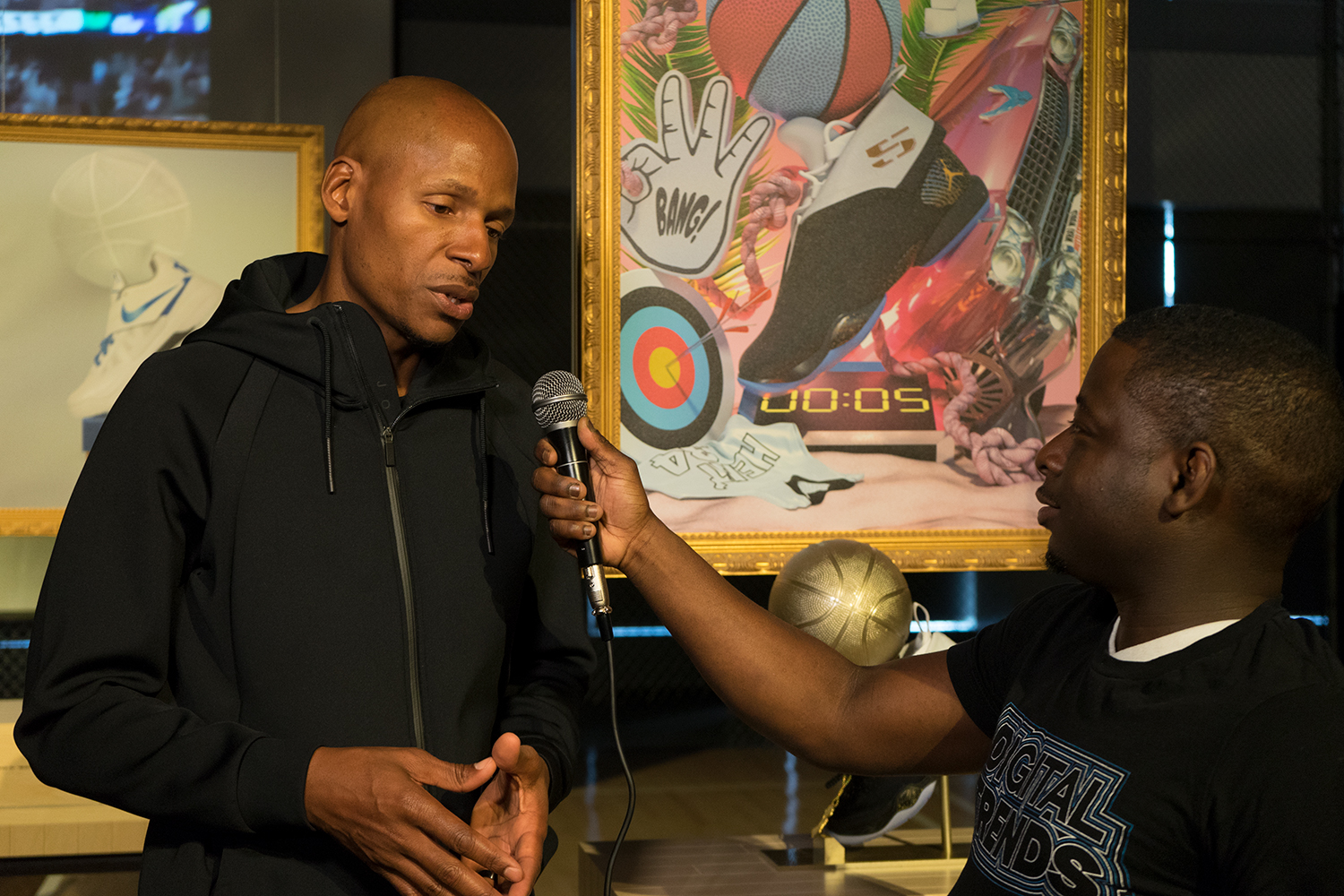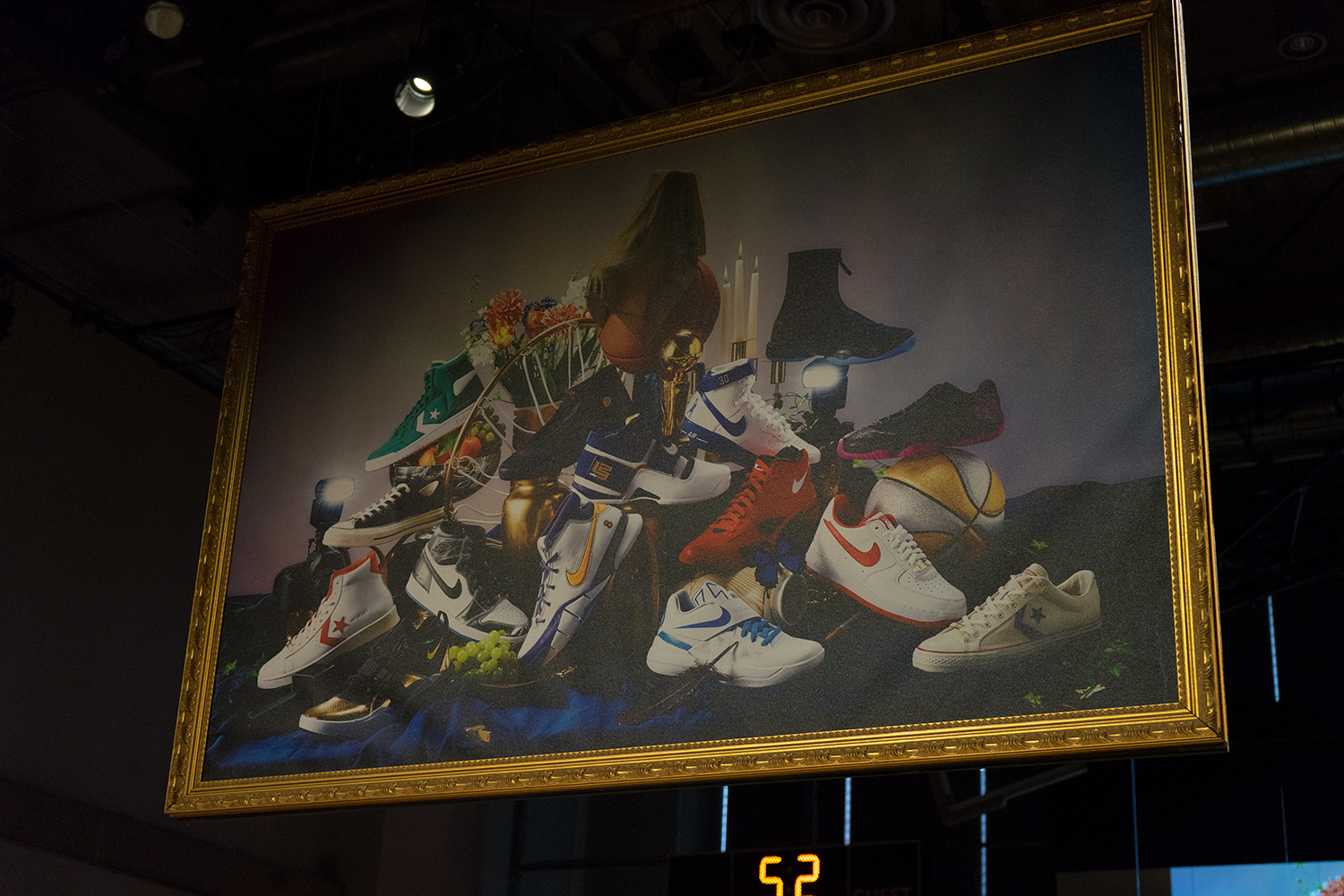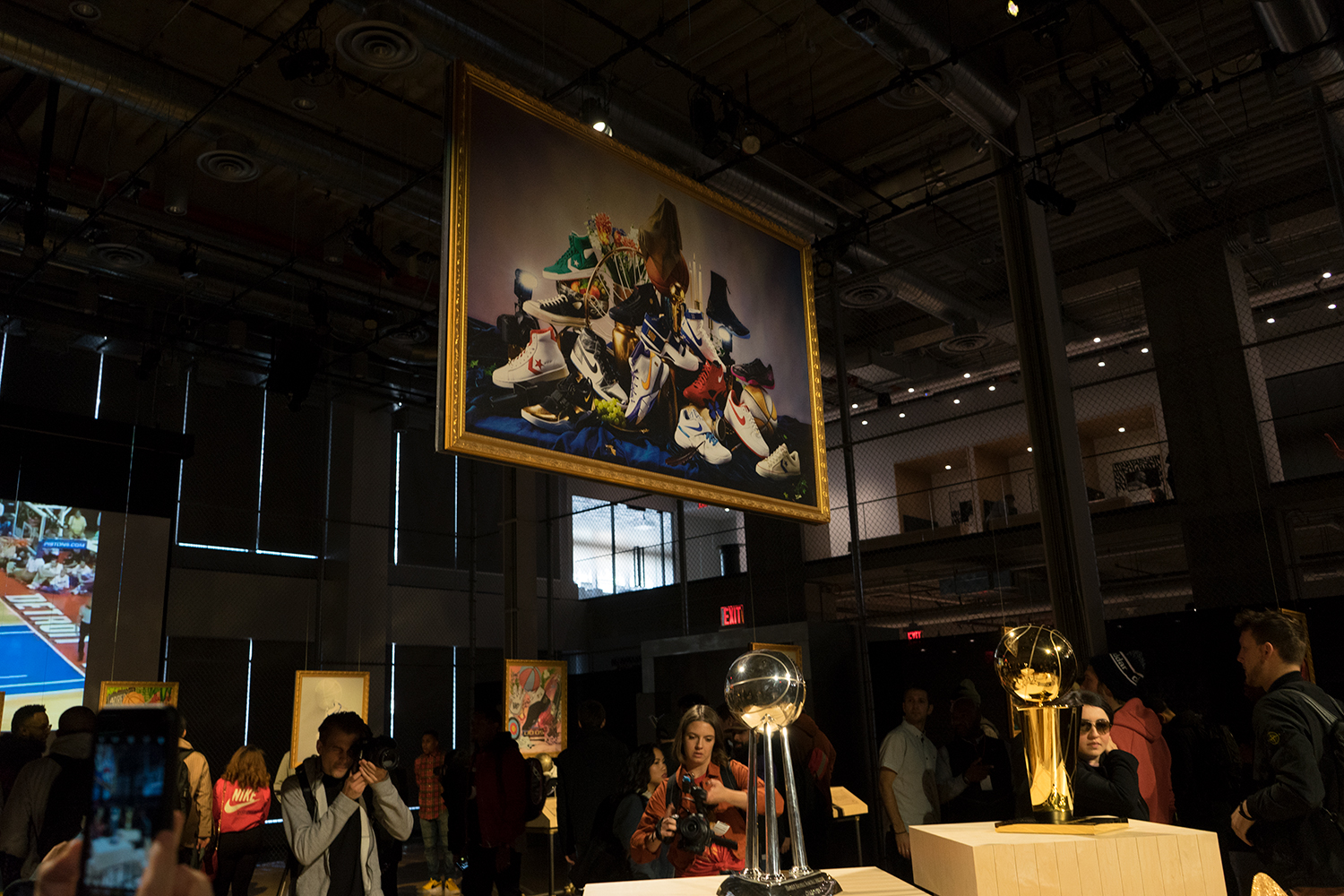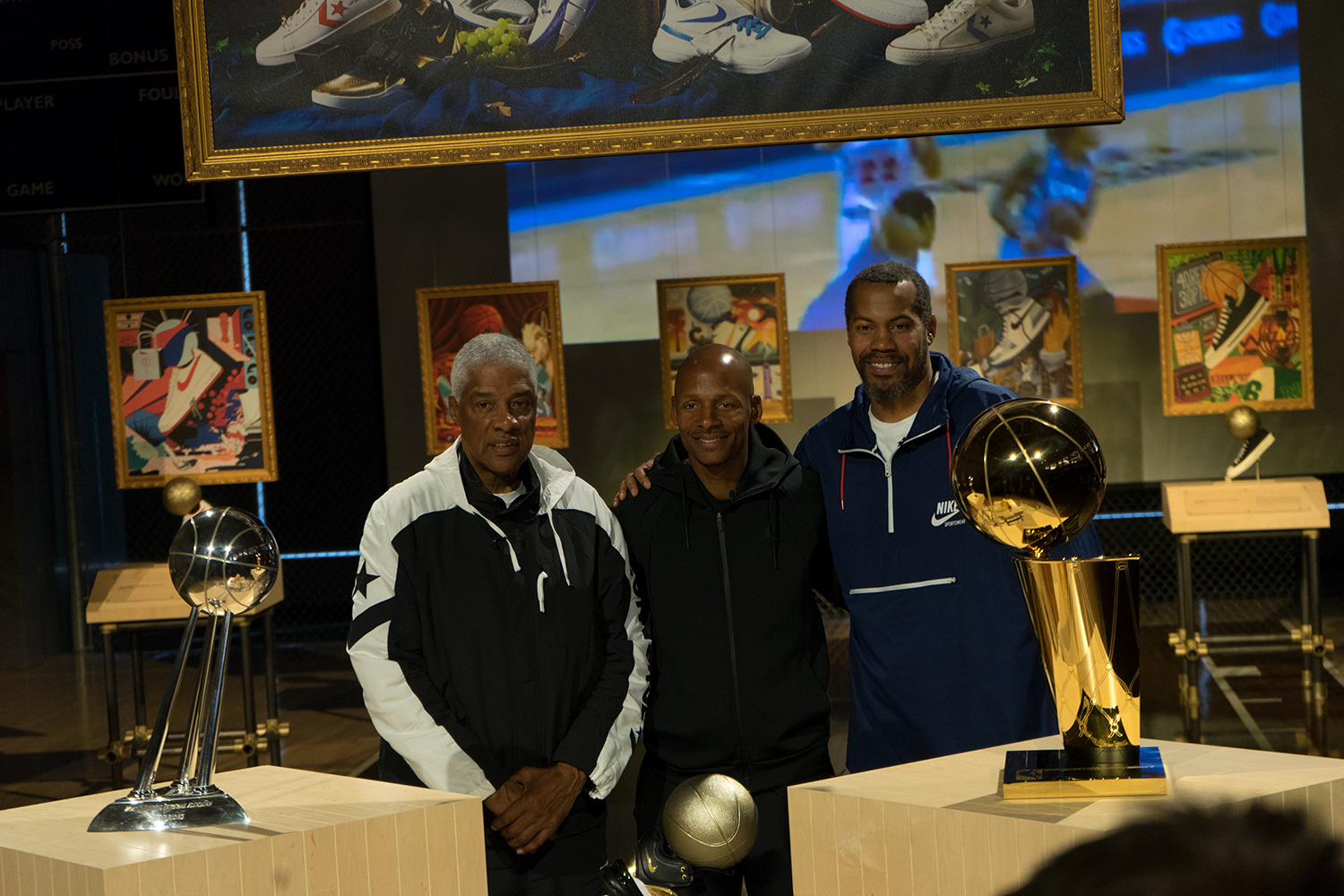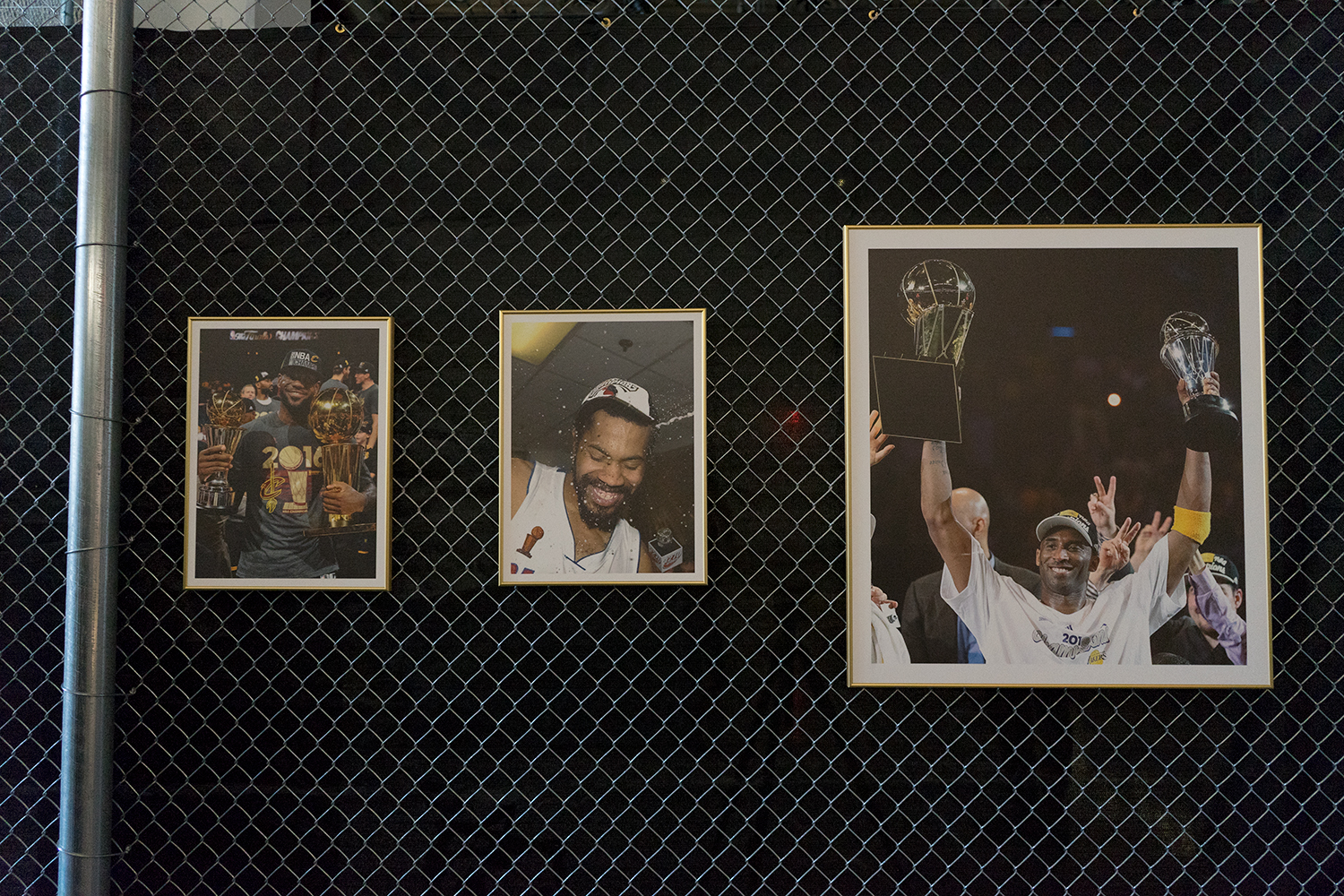For most people, the closest they’ll get to their favorite NBA stars is by wearing their signature shoes — or at least replicas of them. They’ll never “Be Like Mike,” but they can slip on a pair of Michael Jordan’s Air Jordan XIVs, otherwise known as the pair of sneakers he wore during his last game for the Chicago Bulls in 1998. This immutable and enduring fact has the power to transform certain pairs of shoes from mere fashion items into bonafide artifacts.
To build on this, Nike recently held an event in New York City to unveil a proverbial sneaker hall of fame, displaying 15 different pairs of Nike, Converse, and Air Jordan shoes worn during the NBA’s most iconic championship moments. Aside from those Air Jordan XIVs, Nike also showcased the Converse Chuck 70 Low sneakers Bill Russel wore in the ’62 NBA Finals, as well as a dozen other classic releases. There’s even a 16th pair planned to be unveiled by Nike once a champion is crowned at the conclusion of the current 2018 NBA Playoffs.
At the event, Julius Erving, Rasheed Wallace, and Ray Allen each presented a pair of shoes they wore during their own trips to the NBA Finals. Erving wore his Converse Pro Leather Mids during 1980 NBA Finals, Wallace donned a pair of Air Force 1’s at the 2004 Finals, and Allen sported Air Jordan XX8’s during the 2013 NBA Finals. The event also allowed the three to talk about the evolution of sneaker culture and how watching the NBA is about to drastically change.
Sole tales
The design of Erving’s ’75 Converse Pro Leather sneakers — dubbed the Dr. J’s — is relatively simplistic by today’s standards. Though, the simplicity of the iconic star and chevron combo were a reflection of a time when sneakers were more functional than fashionable.
“When they started adding that air bubble into their running shoes and basketball shoes, that gave it that extra flare it needed to make that shoe pop”
“Shoes then were worn as a necessity,” Erving told Digital Trends. “Now it’s a wardrobe option. People have their whole collection of sneakers, and it matches up color-wise and aesthetically with some of the outfits they wear at special occasions. There’s a consciousness about it. Before, we just had that one pair, and we used to rock it with everything. To school, the recreation center, shopping. Just wear that one pair and when that pair got worn out, you just got another.”
Nike’s popularity exploded in the late ’80s and ’90s due in large part to Jordan’s Air Jordan sneakers becoming fashion item people would literally kill for. During that time, the brand continued to treat its sneakers like science experiments. Nike first replaced the foam in the soles of its sneakers with air in 1987’s Air Max 1. Wallace was a 13-year-old when the Air Max 1’s came out, and by the time he had grown into a 6’10 star forward for the Portland Trail Blazers in the late 90s, Nike finally created its first full-length air sole with the Air Max 97. It still lives on in Wallace’s memories to this day.
“When they started adding that air bubble into their running shoes and basketball shoes, that gave it that extra flare it needed to make that shoe pop,” Wallace added.

By the time Ray Allen broke the NBA record for most career three-pointers in 2011, the league already broke TV viewership records, attracting more than 17 million people during a time when the internet began turning sneakers into a billion dollar resale market. With those eyes fervently watching, NBA games started doubling as fashion shows as the next big sneaker craze graced the hardwood runways.
“When I broke the three-point record I had the [Air Jordan] 13’s on,” Allen told us. “They did a green and white version, obviously, because I was [on the Boston Celtics]. Really, any sneaker that I had the opportunity to wear, I was on this stage where every time you wore them it would send shockwaves through the industry. People would say ‘wow, I wonder what he’s going to wear tonight.’ It got to a point where my teammates would say ‘you should wear these shoes.'”

The new NBA
In April of 2018, the NBA announced an initiative that could very well be one of the biggest changes to the way fans watch live games in decades. As part of Turner Broadcasting’s new sports streaming service, B/R Live, the NBA plans to offer the option to buy live games in increments of minutes and quarters. This is drastically different from Erving’s days in the NBA when the NBA Finals were aired on tape delay. But even Dr. J can understand why the NBA’s making this move.
“I can relate to it because I might want to just see the last quarter of a game, or even the last two minutes,” he acknowledged. “I think the way they have split-screen, where you have five or six games on at the same time, very few people watch the whole game. The audience at the game is watching the whole game but the television audience, particularly a pay-TV audience, is watching the highlights, or sections of games.”
The way fans interact with live games may soon change but the manner in which they’ve interacted with their favorite players changed with the introduction of social media. Aside from his name being tied to the Detroit Pistons championship run of ’04, Rasheed Wallace is best known for being outspoken — sometimes, to a fault. For instance, he’s the only NBA player in history to be ejected from a game seven times in a season — and he did it twice.
Because of this, it’s safe to assume that if Sheed (as he’s affectionately known) had social media in the early ’00s, he’d be bad-mouthing opposing teams and referees, right? Though contrary to what that on-court persona might suggest, the man himself says he wouldn’t waste social media on mere trash talk.
“I’d definitely be talking more about social activities and community things,” he said. “I’d get out there more. The NBA’s already done a good job with individual teams and players to make sure those community awards and initiatives get out there. But, if we had social media back then, it would’ve been more up to us to make that happen. Just like it is now.”





